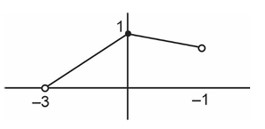What is the Sequences and Series in Class 11 Maths about?
-
1 Answer
-
The Sequences and Series is introduced as Chapter 8 in Class 11 Maths. A sequence is defined as an ordered list of numbers following a specific pattern or rule, while a series is defined as the sum of the terms of a sequence. there are several key topics discussed in this chapter;
Arithmetic Progression (AP): Arithmetic prograssion is a sequence in which a constant term is either added or substracted in consecutive term. Constant term is called common difference.
Geometric Progression (GP): Geometric Progression is a sequence where each term is multiplied by a constant ratio.
Similar Questions for you
...(1)
–2α + β = 0 …(2)
Solving (1) and (2)
a = 1
b = 2
-> a + b = 3
Start with
(1)
(2)
(3) GTE : 4!, GTN: 4!, GTT : 4!
(4) GTWENTY = 1
⇒ 360 + 60 + 60 + 24 + 24 + 24 + 1 = 553
->g(x) = |x|, x Î (–3, 1)

Range of fog(x) is [0, 1]
Range of fog(x) is [0, 1]
First term = a
Common difference = d
Given: a + 5d = 2 . (1)
Product (P) = (a1a5a4) = a (a + 4d) (a + 3d)
Using (1)
P = (2 – 5d) (2 – d) (2 – 2d)
-> = (2 – 5d) (2 –d) (– 2) + (2 – 5d) (2 – 2d) (– 1) + (– 5) (2 – d) (2 – 2d)
= –2 [ (d – 2) (5d – 2) + (d – 1) (5d – 2) + (d – 1) (5d – 2) + 5 (d – 1) (d – 2)]
= –2 [15d2 – 34d + 16]
at
-> d = 1.6
16cos2θ + 25sin2θ + 40sinθ cosθ = 1
16 + 9sin2θ + 20sin 2θ = 1
+ 20sin 2θ = 1
– 9cos 2θ + 40sin 2θ = – 39
48tan2θ + 80tanθ + 30 = 0
24tan2θ + 40tanθ + 15 = 0
-> ,
So will be rejected as
Option (4) is correct.
Taking an Exam? Selecting a College?
Get authentic answers from experts, students and alumni that you won't find anywhere else
Sign Up on ShikshaOn Shiksha, get access to
- 65k Colleges
- 1.2k Exams
- 681k Reviews
- 1800k Answers
